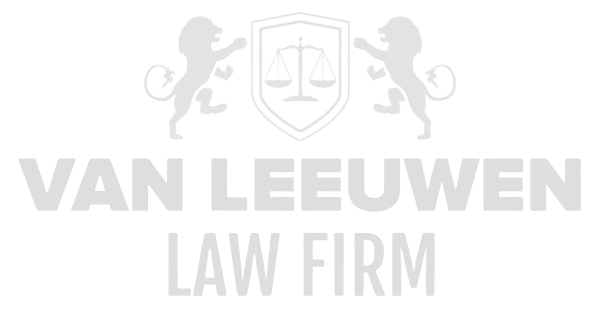E-commerce is characterized by an interplay of technology, logistics, and legal frameworks in which consumer rights and data protection are central. Online retailers must comply with numerous regulations, ranging from transparent product information and right of withdrawal to secure payment methods according to PSD2 standards. The digital customer journey must not only proceed smoothly but also be legally supported by professional legal documentation and technical measures that guarantee consumer protection and payment security.
At the same time, the rise of advanced tracking technologies—such as cookies, pixels, and SDK integrations—has led to new privacy challenges. The ePrivacy Directive and the General Data Protection Regulation (GDPR) impose strict requirements on placing and reading cookies and similar technologies. Unambiguous consent mechanisms, clear cookie statements, and robust technical controls are required to avoid fines from regulators and reputational damage.
Consumer Protection and Online Transactions
For every online transaction, product information must be presented clearly, understandably, and completely. This includes specifications, stock status, prices, and shipping and return conditions. Legal documentation, such as terms and conditions and privacy statements, must comply with the Civil Code and European guidelines, with a crucial focus on correctly documenting the right of withdrawal and the exceptions thereto.
Safe-commerce frameworks, including PSD2 requirements for Strong Customer Authentication (SCA), add additional layers of security to payment processes. This requires the implementation of 3-D Secure, tokenization of card data, and monitoring of suspicious transaction patterns with fraud detection systems. Legal review of contracts with payment providers ensures that liability for technical failures and fraudulent transactions is clearly defined.
The responsibility for consumer protection does not end at checkout; compliance with aftersales obligations, such as refunds within legal timeframes and proper handling of warranty claims, is essential. Legal procedures for dispute resolution—such as dispute committees and B2C arbitration—must be integrated into service processes to maintain customer trust and brand reputation.
Privacy, Cookies, and Tracking Technologies
Cookies and similar tracking mechanisms fall under the ePrivacy Directive, distinguishing between strictly necessary cookies and non-essential tracking cookies. For non-essential cookies, explicit, informed, and freely given consent is required. Technical implementation via Consent Management Platforms (CMPs) must operate in such a way that scripts and tags are only activated after valid opt-in, with transparent logs of user choices for audit purposes.
Cookie statements must be comprehensive in content: for each cookie category, it should be stated what data is collected, for what purpose, by which parties, and how long the data will be retained. Legal review of banner texts and information architecture is necessary to avoid ambiguities and confusing “yes” and “no” buttons. Consent data must be stored immutably, with timestamps and provenance details, to demonstrate during audits by regulators that consent has been lawfully obtained.
Technical measures—such as cookieless tracking alternatives, geofencing of scripts, and automatic tag blocking when consent expires or is withdrawn—require close cooperation between legal, IT, and marketing teams. Automated surveillance tools detect abnormal cookie behavior and trigger compliance alerts, enabling real-time corrections in case of implementation errors.
Global Cookie and Privacy Strategy
International e-commerce platforms must consider diverse privacy legislation in the EU, the UK, the US, and Asia. Legal frameworks for international cookie strategies combine different consent requirements, from ePrivacy opt-in in the EU to CCPA flexibility in California. Contractual clauses with international data processors and ad-tech partners include safeguards for data localization, transfer mechanisms (SCCs, BCRs), and penalty clauses for changes in the legal status of third countries.
Implementing a global CMP requires advanced configuration management: for each jurisdiction, different banner templates, language versions, and consent levels must be managed in a single centralized solution. Version control and release management processes ensure that adjustments to local legislation—such as PECR in the UK or AP guidelines in the Netherlands—are rolled out promptly and error-free.
Continuous monitoring of international enforcement actions and penalty reports is an indispensable source for legal and compliance teams. Automated feeds from regulators and news alerts are parsed and translated into concrete changes in cookie and privacy policies, enabling platforms to achieve perpetual compliance worldwide.
Direct Marketing: Consent vs. Legitimate Interest
Direct marketing via email, SMS, push notifications, and personalized ads requires careful selection of legal basis: explicit consent or, in exceptional cases, legitimate interest. When consent is involved, opt-in must be obtained through an active action (double opt-in procedures, slice-in-checkbox) and opt-out options must be just as simple and prominently available as opt-in buttons.
For marketing on mobile and electronic communications (SMS, WhatsApp, push notifications), additional telecommunications regulations apply, such as PECR in the UK and the E-Privacy Directive in the EU. Sending restrictions, time-of-day rules, and blacklist management require technical filters and logic built into marketing automation platforms, combined with legal review of campaign flows.
Data segmentation processes and profiling techniques must be carefully aligned with privacy principles. Process documentation, DPIAs, and auditing of marketing databases prevent unintended violations of personal data rights. Transparent communication in every marketing message, including clear references to privacy statements and opt-out links, is essential to avoid enforcement risks and reputational damage.
Campaign Optimization and Compliance
Marketing campaigns are only successful when they meet legal requirements while simultaneously generating impact. A/B testing of banner texts and call-to-actions must not violate consumer rights, such as misleading advertising bans. Legal review of campaign content—keywords, images, and disclaimers—is crucial to substantiate claims and prevent liability for misleading actions.
Consent data must be integrated into analytics pipelines so that reports and KPIs are filtered only for data for which valid consent has been granted. Real-time synchronization between CMPs and data warehouses prevents unauthorized data from being used for targeting and personalization. Compliance dashboards signal deviations and generate audit reports for internal and external controls.
Periodic campaign audits—both legal and technical—provide insight into compliance and performance. These audits combine logs from sending platforms, consent history, and incident reports with market analysis, allowing legal and marketing teams to implement lessons learned and ensure future campaigns remain agile, effective, and compliant.














